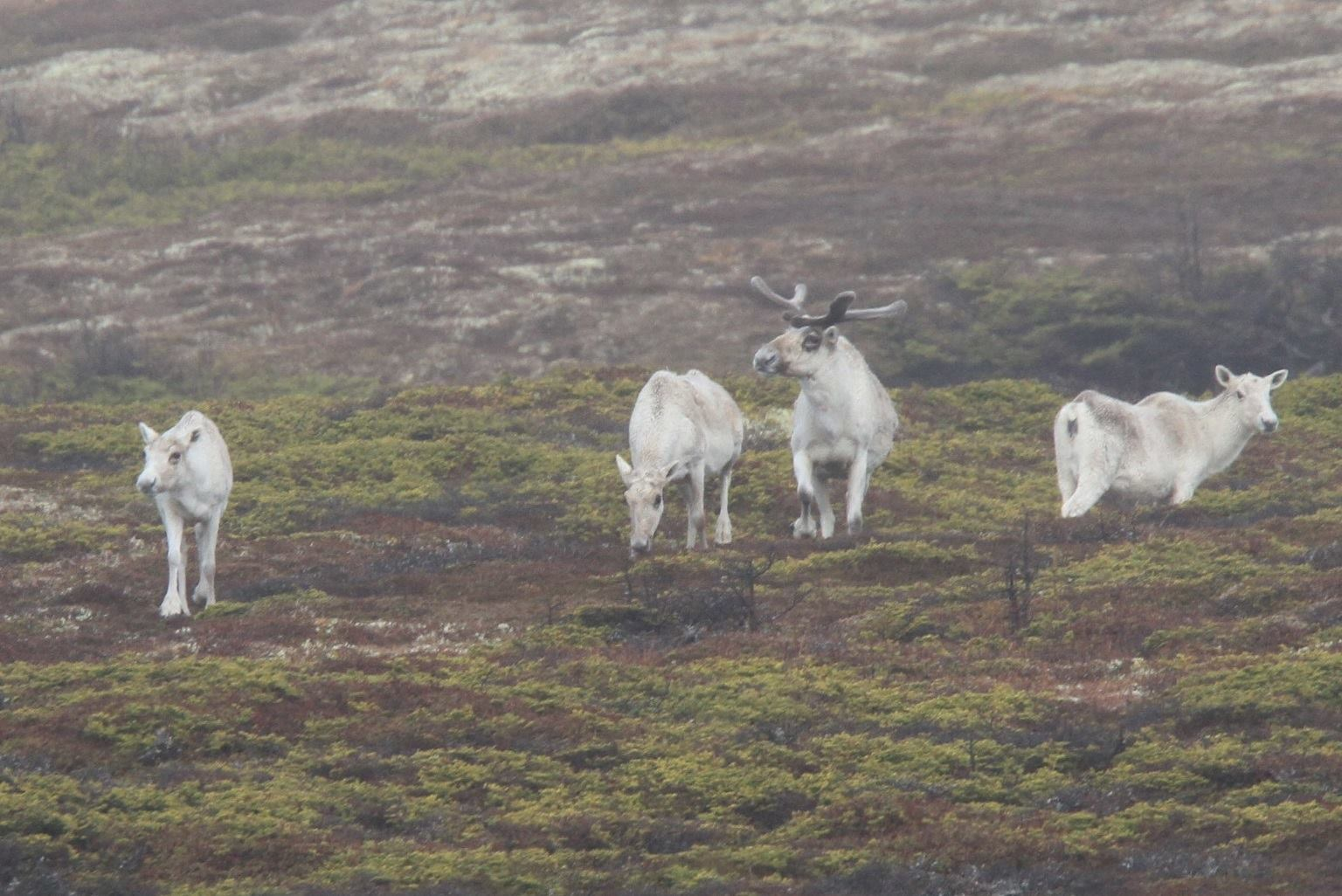Search
Land Mammals
Woodland caribou and Moose are the iconic land mammals of the area. Look for caribou in the daytime on the open barrens along Route 10 between Trepassey and Peter’s River, and on the St. Shotts and Cape Pine Rods. A viewing site on Route 10 just east of the St. Shotts turnoff provides an excellent vantage point to look for caribou. Sometimes the caribou are distant so binoculars or a scope are useful. The Peter’s River herd may contain up to 5,000 animals. In early settlement days the population was likely much larger.
Caribou can also be seen occasionally on the barrens on Route 10 north of Portugal Cove South and along the Cape Race Road from Freshwater River east towards the Cape.
Since the turn of the 21st century caribou numbers have plummeted due to a variety of causes, from brain worm and over-hunting, to coyote predation of young animals. Recent studies indicate that the large Avalon moose population may have attracted more predators. The populations of all caribou herds in eastern Canada are in decline for various reasons, including habitat loss and human encroachment.
Caribou are likely to be encountered in spring, summer and fall while feeding on reindeer moss on the open barrens. In winter most retreat north into inaccessible forest forests of the Avalon Wilderness Reserve.
 A typical photo of Caribou on the barrens
A typical photo of Caribou on the barrens
Moose were introduced from the mainland to Newfoundland in the late 19th century. Without predators the population has flourished. The southern shore population is generally healthy but sightings can vary from year to year. Since moose are usually active at night and sedentary during the day, they are rarely seen, but caution - night driving is not recommended! The roads are dark, and the moose darker, and often you can’t see them until your headlights illuminate their long legs, straddling the road. Most local drivers avoid long distance night driving as a result.
The best places for finding moose is in the pre-dawn or at dusk on the fringes of the coniferous forest along Route 10 south of Renews, anywhere in the Bear Cove-Cappahayden area south to Shoe Cove Road, and in Portugal Cove South, Biscay Bay and Trepassey areas. In the past the volume of moose in the Trepassey area has been so extensive that Trepassey might easily lay claim as the moose capital of Newfoundland.
You can see a remarkable video of a “herd” of moose taken by Clifford Doran a few years ago. It can be found on his Facebook Page: “Clifford Doran Trepassey”.
To be entirely honest the southern shore moose population has been in decline in the last couple of years. The reasons are not clear.
Below is a male moose in broad daylight in the front yard of a house near Daniel’s Point, Trepassey. Below that, more typically, roaming moose out for a late night or early morning stroll.
There are other mammals to see. You might see a weasel or a mink run across the road, and hear a red squirrel in a wooded area. Foxes, which come with coats of red, black and silver, are not uncommon though rarely seen. Coyotes first arrived on the island across the ice from Labrador around 1985. In recent years they have spread into our area taking a toll on young caribou and snowshoe hares. The hare population is also in decline. Other factors are local hunting and trapping.
Meadow voles are often plentiful. You may see tracks through the low vegetation. If you sit quietly on a coastal hilltop you might just see a movement in the heath as the voles scurry into holes. Voles are the prime food of Northern Harriers, Short-eared Owls and Coyotes.
Tiny shrews are particularly common. They are often seen scurrying across roads, or sometimes across the floor of an old house. There are no house mice.
For more information see the Land Mammal Checklist in this section.